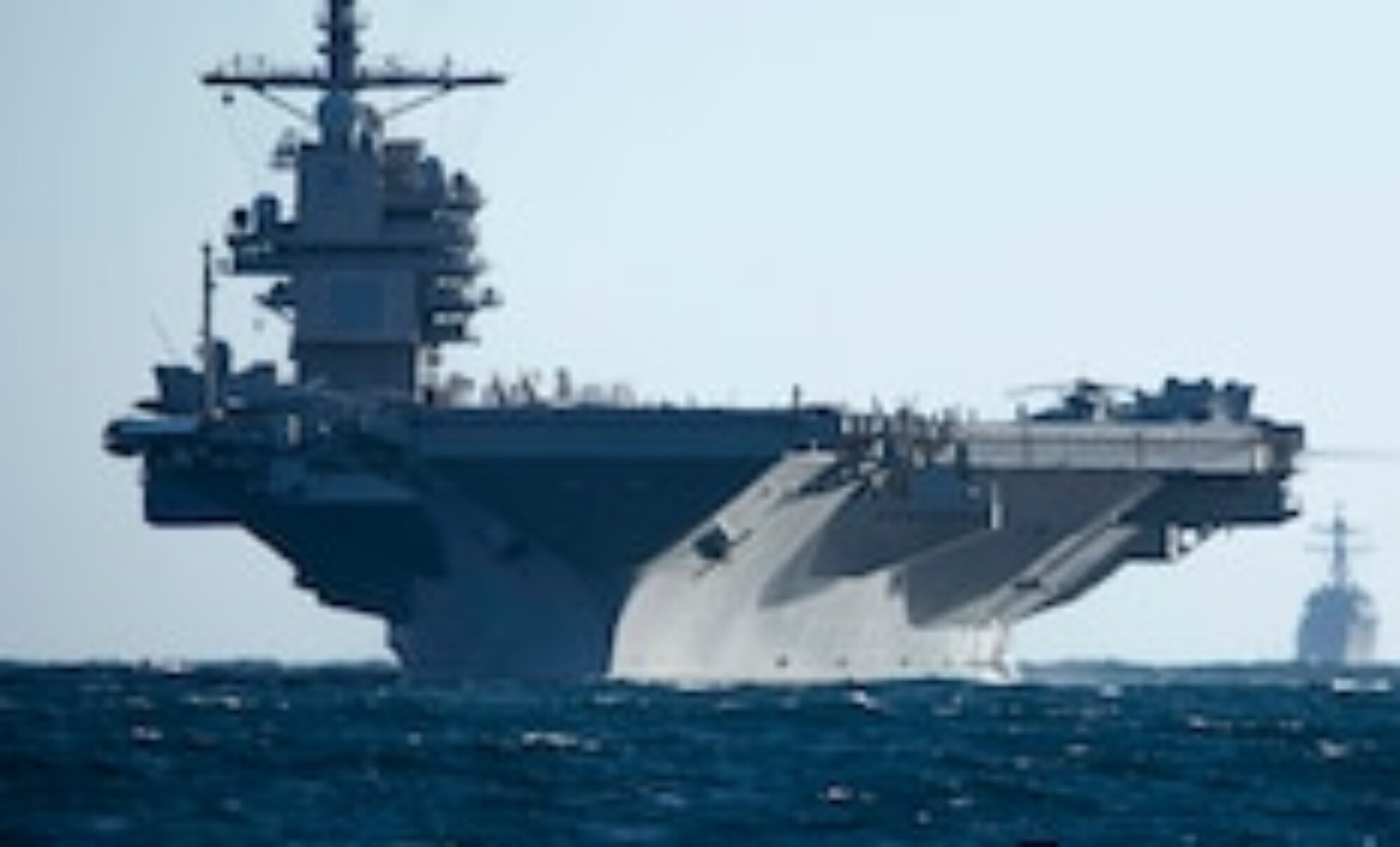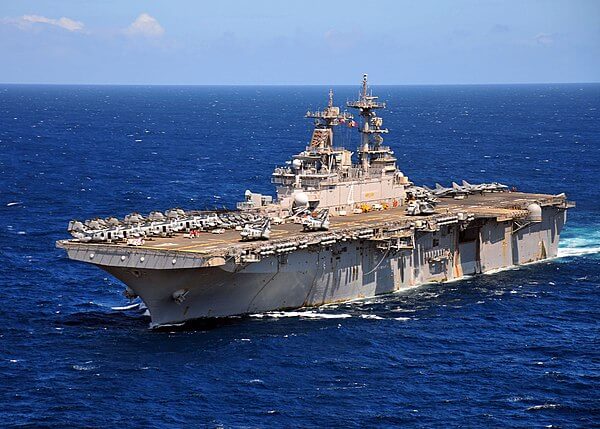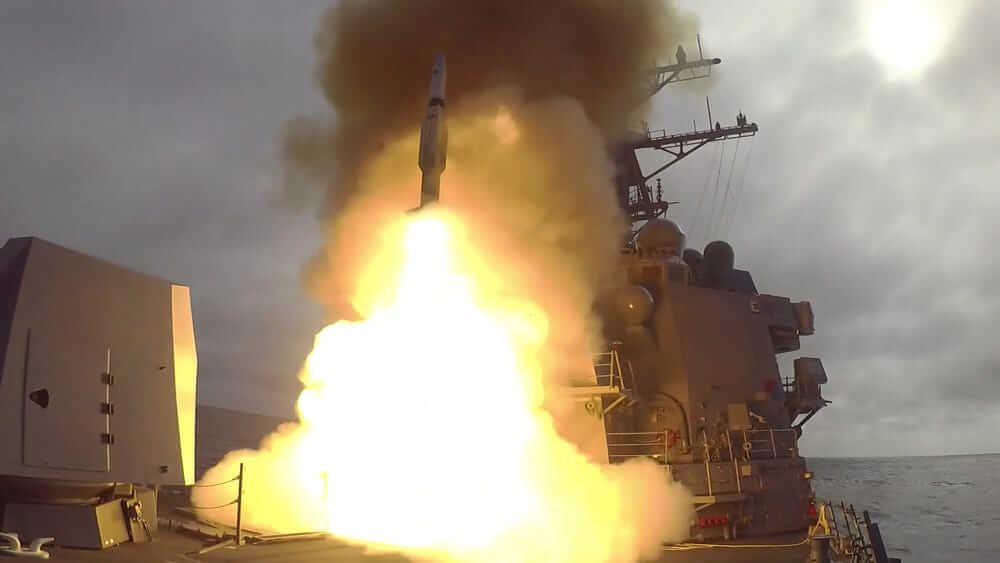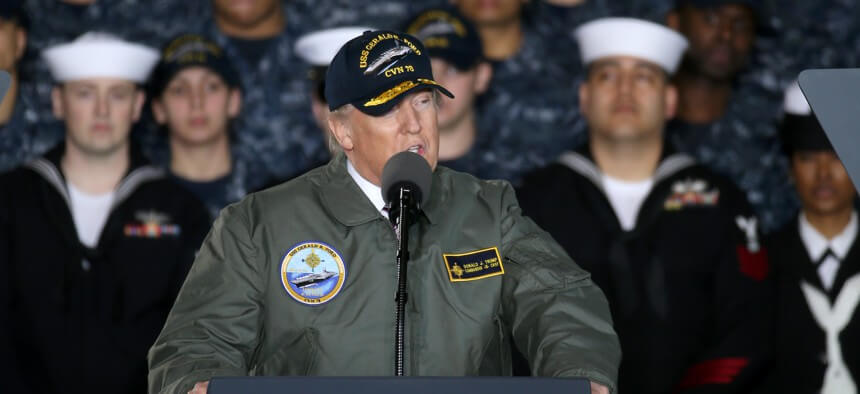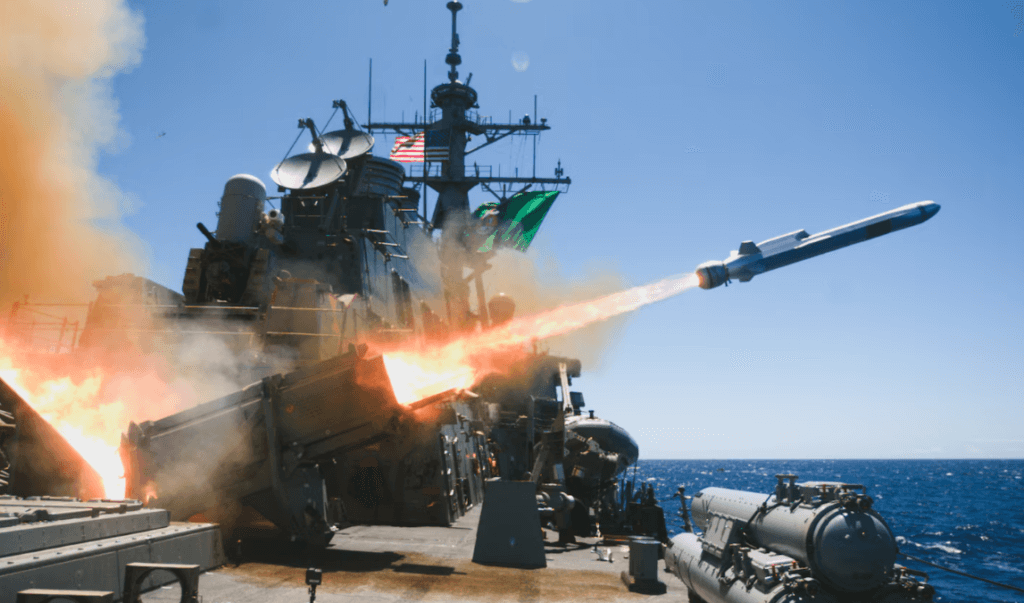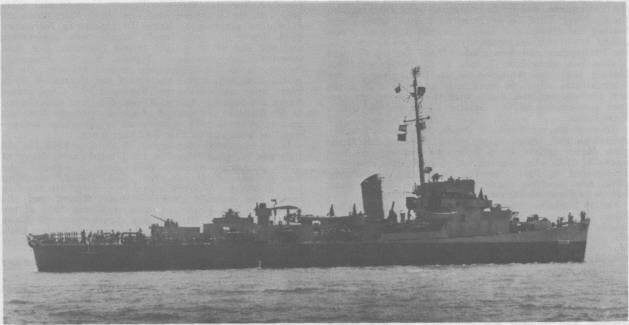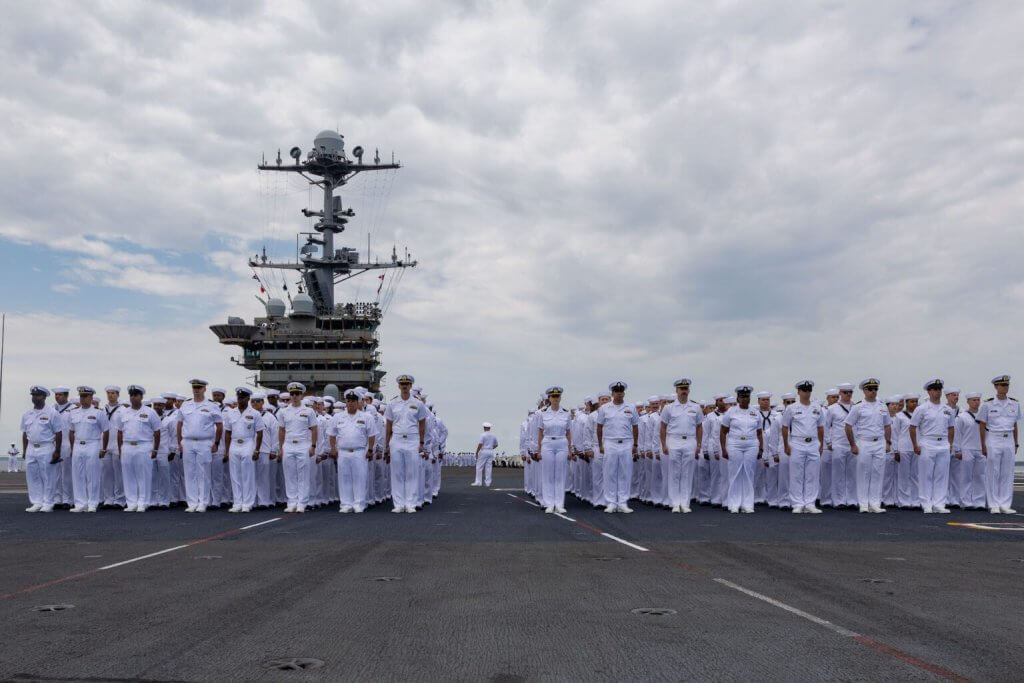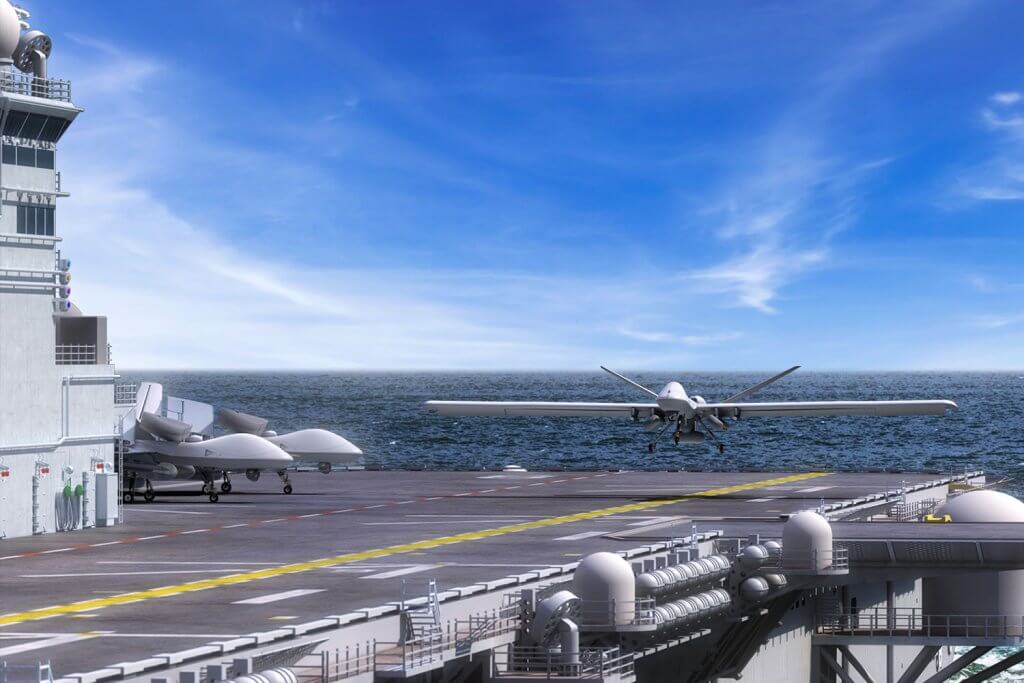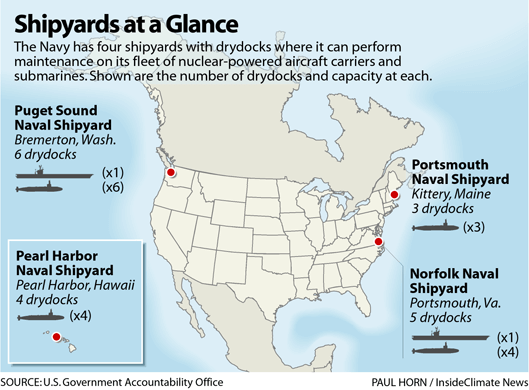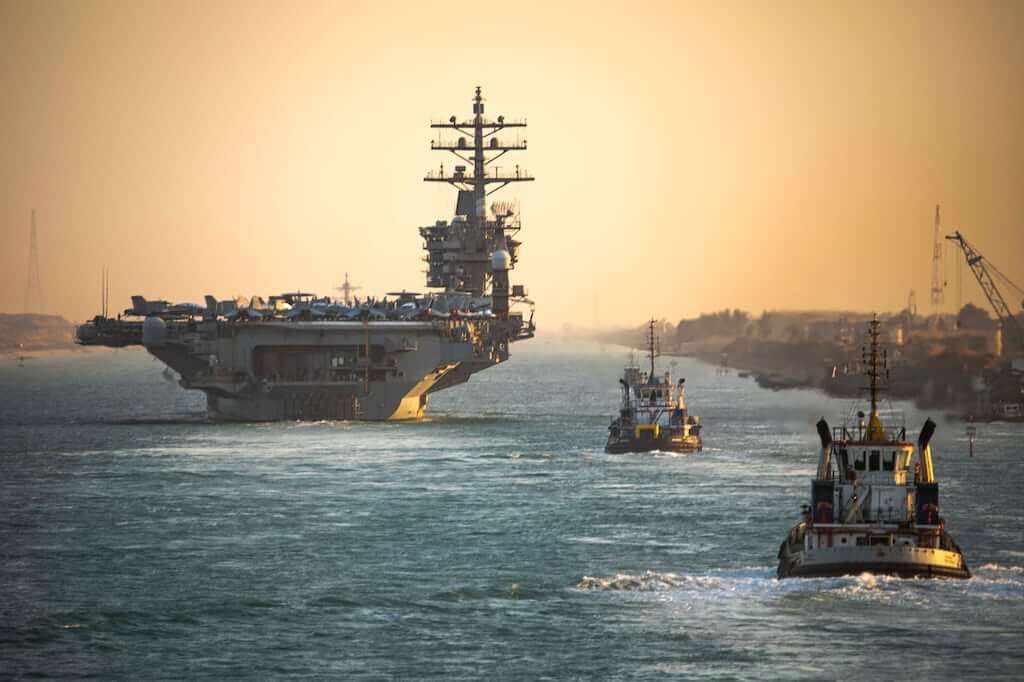James Dimon
Chief Executive Officer
JP Morgan Chase Headquarters
270 Park Avenue
New York, NY
Dear Mr. Dimon,
A Call for Leadership in Addressing Modern Threats and Ensuring Economic Stability
Executive Summary

This open letter is addressed to James Dimon, following his recent article in Newsweek where he stated, “World War III has already begun.” My name is Bill Cullifer, a former U.S. Navy destroyer sailor and the founder of Americans for a Stronger Navy. I share your concerns and write to stress that these threats are not just looming—they are already here.
Drawing on over two decades of experience in private-sector telecommunications and web technologies, as well as firsthand knowledge of navigating global waterways, I have witnessed the vulnerabilities in critical infrastructure that adversaries are now actively exploiting.
This letter highlights the Navy’s indispensable role in countering cyber warfare, safeguarding trade routes, and protecting economic stability. To address these urgent challenges, we propose an opportunity to explore how your leadership can strengthen naval readiness through three key initiatives:
- Advocacy: Leverage your platform to emphasize the Navy’s critical role in securing global supply chains and maintaining economic stability.
- Coalition Building: Lead a private-sector alliance to support naval modernization, bolster cybersecurity, and enhance infrastructure resilience.
- Public Awareness: Partner with Americans for a Stronger Navy to educate the public and business leaders about the Navy’s essential role in protecting national and economic security.
Your voice and influence can inspire the public, corporate stakeholders, and policymakers to take decisive action. Together, we can secure America’s strategic and economic future while ensuring the Navy remains a cornerstone of global stability.
The Time to Act Is Now: Addressing Unprecedented Global Threats
In a recent article in Newsweek, you remarked that “World War III has already begun.” You warned of escalating tensions and an “evil axis” involving Russia, North Korea, Iran, and China—and the extraordinary risks we face if we fail to act decisively. Your words resonate deeply—not just as a forecast of conflict, but as a stark reminder of the unprecedented threats we face. The “knock, knock” isn’t just at the door—we’re already here.
A New Kind of War: Threats We Face Today
Modern warfare is no longer limited to traditional military engagements. Cyberattacks, economic sabotage, and intellectual property theft are actively dismantling critical systems across key sectors:
- Healthcare: Ransomware attacks have paralyzed hospitals, delaying surgeries and endangering lives.
- Energy: Russian hackers infiltrated energy companies, including a Kansas nuclear power plant, exposing vulnerabilities in power grids.
- Finance: Cybercriminals disrupt transactions, destabilize markets, and threaten global economic stability.
- Military Networks: Defense logistics and operational security are increasingly compromised.
- Technology: Intellectual property theft undermines U.S. innovation and competitiveness.
These attacks are part of a coordinated strategy to weaken America’s infrastructure, disrupt supply chains, and challenge national security. A detailed timeline of these cyber threats and additional context from the Wall Street Journal interview are included in the attached documents for your review.
The Navy’s Role: Defending America’s Economy and Freedom of Navigation
The U.S. Navy is uniquely positioned to counter these threats.
- Strategic Chokepoints: Safeguarding trade routes like the Strait of Hormuz and the South China Sea prevents adversaries from weaponizing these global lifelines.
- Amphibious Readiness: Ensuring threats can be contained at their source while protecting U.S. maritime borders from adversarial activities.
- Cybersecurity Leadership: Protecting critical infrastructure, such as undersea cables and port systems, that underpin global commerce.
Navy Statecraft: A Peace-Winning Approach
As Captain Brent Sadler, U.S. Navy (Retired), emphasizes, “Tomorrow’s wars cannot be fought with yesterday’s tools.” The Navy must leverage statecraft and strategic alliances to deter aggression and uphold global stability.
- Next-Generation Technology: Incorporating artificial intelligence and advanced cyber defenses to counter evolving threats.
- Global Alliances: Strengthening partnerships in the Indo-Pacific to counter China’s growing influence and protect trade routes.
- Deterrence Through Presence: A visible, strong Navy projects stability, counters disinformation, and reinforces U.S. leadership.
The Navy’s readiness ensures that economic disruptions and geopolitical tensions do not spiral into broader conflict.
A Call to Action: Building a Stronger Navy Together
As you rightly stated, “We can’t take the chance this will resolve itself.” The Navy is America’s first line of defense against modern threats.
How You Can Help
- Advocate for corporate investment in cybersecurity and technological innovation to secure critical infrastructure.
- Support partnerships between private industry and the Navy to strengthen supply chains and bolster resilience.
- Raise public awareness about the Navy’s role in safeguarding economic and strategic interests.
- Lobby Congress for greater funding to modernize and equip the Navy for emerging threats.
Closing
StrongerNavy.org offers a platform for education, advocacy, and action. I urge citizens and corporate leaders alike to support the Navy—not just for national security but to protect the economy and way of life we all depend on. For further details, I invite you to review the attached summaries of notable cyber events and the Salt Typhoon hack, which illustrate the urgent need for immediate action.
Sincerely,
Bill Cullifer
Founder, Americans for a Stronger Navy
Attachment: Notable Cyber Events
This attachment will include details about specific notable cyber events like the Salt Typhoon hack, Triton malware, and ransomware campaigns to provide further context for the threats discussed.
Economic Sabotage, Cyber Warfare, and National Security
The FBI has sounded the alarm, urging public participation to combat these threats. FBI Director Christopher Wray stated:
“We view this as combat posture with respect to cyber activity.”
Timeline:
- Attacks on Google and RSA Security
- These breaches signaled the rise of China’s state-sponsored cyber warfare efforts, targeting high-profile companies to weaken technological defenses.
- “Pacific Rim” Campaign
- Conducted by Chinese Advanced Persistent Threat (APT) groups, this campaign exploited vulnerabilities in devices like the Sophos XG Firewall over several years.
- Impacted sectors include:
- Healthcare
- Technology
- Finance
- Military Networks
- The campaign aimed to steal sensitive data and compromise critical infrastructure globally.
- Ransomware Epidemic
- Over the past year, ransomware attacks have paralyzed industries such as:
- Healthcare: Hospitals disrupted, delaying patient care.
- Technology: IT systems taken offline, halting operations.
- Hospitality: Hotel chains forced to halt services, impacting guests and revenue.
- Over the past year, ransomware attacks have paralyzed industries such as:
- Energy Infrastructure Breaches
- Russian hackers infiltrated hundreds of energy companies, including a Kansas nuclear power plant, exposing vulnerabilities in critical energy systems.
- Triton Malware by Russian Hackers
- Triton malware was specifically designed to:
- Cause explosions
- Trigger toxic chemical releases
- This attack revealed a lethal escalation in cyber capabilities aimed at industrial sabotage.
- Triton malware was specifically designed to:
- AI in Cyber Operations
- Chinese entities have been leveraging AI tools to:
- Conduct research on companies and intelligence agencies.
- Create phishing campaigns and refactor malicious code.
- Translate and interpret technical papers to enhance cyber operations.
- Chinese entities have been leveraging AI tools to:
- China’s Escalating Cyber Threats
- Recent incidents highlight the scale and sophistication of Chinese state-sponsored cyber campaigns that threaten both national security and global stability:
- T-Mobile Hacked in Massive Chinese Breach of Telecom Networks
- In a major spying operation tied to the Chinese government, T-Mobile joined a growing list of known victims, including AT&T and Verizon.
- This cyberattack penetrated the networks of U.S. broadband providers, potentially accessing systems th ae federal government relies on for sensitive communications.
- APT40
- In July 2024, the NSA and CISA joined seven other nations in issuing a joint advisory on APT40, a Chinese hacking group targeting:
- Maritime industries
- Defense contractors
- Academic institutions
- This campaign demonstrates China’s strategic focus on destabilizing critical sectors.
- In July 2024, the NSA and CISA joined seven other nations in issuing a joint advisory on APT40, a Chinese hacking group targeting:
- Flax Typhoon Campaign
- In September 2024, FBI Director Christopher Wray announced the disruption of Flax Typhoon, a Chinese state-backed hacking campaign targeting U.S. critical infrastructure.
- The operation aimed to compromise systems essential to national security and economic stability.
- Seven Hackers Charged for Targeting U.S. Critics
- The Department of Justice charged seven individuals associated with the Chinese government for computer intrusions targeting:
- Perceived critics of China
- U.S. businesses
- Politicians
- This demonstrates a coordinated effort to suppress dissent and manipulate global narratives.
- The Department of Justice charged seven individuals associated with the Chinese government for computer intrusions targeting:
- I-Soon/Auxun Operations
- Leaked documents exposed efforts by I-Soon, a contractor linked to Chinese intelligence agencies, to harass:
- Dissidents
- Academics
- Uyghur communities overseas
- These campaigns reveal a broader strategy of global suppression and authoritarian projection.
- Leaked documents exposed efforts by I-Soon, a contractor linked to Chinese intelligence agencies, to harass:
- T-Mobile Hacked in Massive Chinese Breach of Telecom Networks
- Recent incidents highlight the scale and sophistication of Chinese state-sponsored cyber campaigns that threaten both national security and global stability:
Attachment
Salt Typhoon: A Summary of the Chinese Cyber Threat
Introduction
The Salt Typhoon hack, as revealed by The Wall Street Journal on October 8, 2024, represents one of the most alarming cyber-espionage campaigns in recent history. This Chinese state-sponsored cyberattack underscores the growing sophistication and persistence of nation-state hacking efforts aimed at undermining U.S. infrastructure, national security, and economic stability.
The attack infiltrated critical telecommunications systems, exposed sensitive surveillance operations, and targeted key infrastructure sectors, including power grids, transportation, and water systems. Salt Typhoon exemplifies how adversaries like China are shifting from loud, disruptive attacks to stealthy, long-term intrusions designed to cripple essential systems during potential future conflicts.
Key Takeaways
- Unprecedented Network Intrusion
- Hackers tied to the Chinese government infiltrated major U.S. broadband providers, including Verizon, AT&T, and Lumen.
- These intrusions granted access to domestic wiretapping systems used by U.S. law enforcement for court-authorized surveillance.
- Quote: FBI Director Christopher Wray warned, “The risk that PRC hackers pose to every American requires our attention now.”
- National Security at Risk
- The hack allowed Chinese spies to monitor what U.S. authorities were investigating, including counterintelligence efforts targeting Chinese operatives.
- Sensitive data on criminal and national security investigations may have been compromised.
- Quote: “The Chinese were essentially able to spy on what the U.S. government was spying on,” said Wall Street Journal cybersecurity reporter Dustin Volz.
- Stealthy and Sophisticated Techniques
- Salt Typhoon operated with extraordinary stealth, evading detection for months, if not years.
- This marks a strategic shift from China’s previously “loud” cyberattacks to adopting Russian-style tactics for long-term access.
- Quote: “They are embedding themselves in networks big and small, lying in wait,” said Volz.
- Critical Infrastructure Targeting
- Beyond surveillance systems, Chinese hackers targeted critical U.S. infrastructure, including:
- Power grids
- Oil and gas pipelines
- Transportation networks
- Water treatment plants
- These attacks are designed to maintain access for potential disruption during future conflicts.
- Quote: Volz described these efforts as “detonating the cyber equivalent of bombs in these networks to cripple them.”
- Beyond surveillance systems, Chinese hackers targeted critical U.S. infrastructure, including:
- A Broader Strategy
- The Salt Typhoon hack is part of a wider campaign of Chinese cyber operations targeting U.S. infrastructure and private companies.
- Quote: “We are probably only seeing the tip of the iceberg,” Volz warned, emphasizing the unknown extent of the breaches.
Implications
- Economic and National Security
- The breach highlights vulnerabilities in U.S. digital and physical infrastructure, emphasizing the urgent need for stronger cybersecurity measures.
- Evolving Threats
- Chinese hackers are refining their capabilities, moving beyond data theft to preparing for destructive, infrastructure-crippling attacks.
- Private Sector Role
- Much of the targeted infrastructure is privately owned, and insufficient cybersecurity requirements have created a “target-rich environment” for adversaries.
